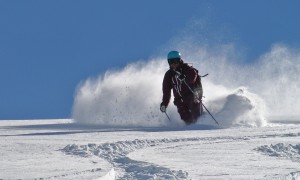Finding the right skis – renting or buying?
A quick guide to choosing the right skis this winter – We’re here to help!
Do you find it difficult to know which skis to choose? Don’t worry, you’re not alone, with a never-ending choice of skis to pick from, we’ve created this quick guide to help point you in the right direction!
So, which type of skis should you go for?
First of all, you should think about where on the mountain and when you will be using your skis.
If you know that you will only be enjoying groomed slopes this winter, then a piste ski is what you’re looking for. In an ideal world, the best solution would be to have several pairs of skis if you were riding all over the mountain. However, for most us, our wallet doesn’t stretch that far nor is it the most practical! Yet due to the dramatic advancement in ski technology, manufacturers have brought out skis that work on all types of terrain from on piste to off piste. It does have to be said that those looking to enjoy steep and deep powder, your life would be made a whole lot easier if you choose a wider option as it will aid you both in floatation and movement in deep powder snow. So have a think about where you will be riding on the mountain…
PISTE SKIS
A piste ski is designed and manufactured to perform well on groomed slopes. They are built to handle harder surfaces and icier conditions. Here you have two options; a ski solely designed for slalom that will be a little shorter in length but works well for fast and quick carved turns or a giant slalom ski that is suited toward high speeds and longer turns and requires a sturdier construction to handle those high speeds and keep an edge.
FREERIDE SKIS
A freeride ski is designed to be used in all conditions, both on the piste but also outside the groomed slopes, off piste. The waist on these skis is a little wider than the pure-piste skis, making the ski easier to use in variable snow conditions. A great choice for those looking to go all over the mountain.
POWDER SKIS
The widest skis on the market; these are usually 100mm or wider on the waist to help both float and ease of use in powder. These skis will be a bit more difficult and slower in groomed conditions, but if you are seeking out steep and deep powder then these are the obvious choice!
TWIN TIP SKIS
Are you looking to venture into the snowpark? Some of these skis are perfectly symmetrical and come with mid-mounted bindings which means they should work just as well going backwards as forwards. Therefore, these models are raised both at the front and rear of the ski. Some twin tip skis can be good all mountain options and can also be used off piste thanks to them being made slightly wider.
WOMENS SKIS
All manufacturers today make women’s models, this is because women generally weigh less and will not put the same pressure on the skis as men. A women’s ski is a little lighter than the corresponding men’s ski and the binding may also differ to improve and facilitate the way the ski handles.
There is absolutely no need to use a women’s model if you are a good and strong skier but if you are a beginner/intermediate, we would recommend it because it will make your skiing easier.
WHAT IS ROCKER?
A ski equipped with rocker primarily means that the ski’s nose begins earlier on the ski. This has been developed to improve ride quality and fluidity in looser snow conditions. The result is that the ski runs smoothly over bumps and the edges dont get caught on small ridges on the slopes.
WHAT IS TURNING RADIUS?
Turning radius is determined by the arch of the ski, which is a measure of the relationship between different parts of the ski; tip, waist and back end. The arch together with the length of the ski determines how sharp the ski turns when you put it on edge.
Slalom skis are very short and snappy in the turns and always have a short turning radius while giant slalom skis that will be skied in longer faster turns have a greater turning radius.
RENTING OR BUYING
That’s a tricky question and there are pros and cons to both.
If you rent your skis you will always be able to get the latest models and technology and you don’t have to carry your skis with you when you travel.
If you buy your skis you will always know what you get (and hopefully like) and how your skis are going to perform in different conditions because you have skied on them for a while.
From a financial point of view there is a good rule of thumb – if you ski less than 3 weeks a year rent your skis and if you ski for more than 3 weeks buy them. That is the breakeven point if you compare renting vs. buying, servicing and transporting your own skis.
And remember, you can always ask your instructor for help with buying skis, they are probably the people who know the most about your skiing and what type of skis you need.
See you on the slopes!
Kenta



Leave a Reply